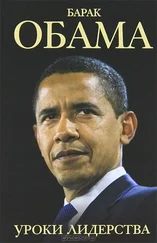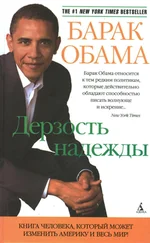Барак Обама - The Audacity of Hope
Здесь есть возможность читать онлайн «Барак Обама - The Audacity of Hope» весь текст электронной книги совершенно бесплатно (целиком полную версию без сокращений). В некоторых случаях можно слушать аудио, скачать через торрент в формате fb2 и присутствует краткое содержание. Жанр: Политика, на английском языке. Описание произведения, (предисловие) а так же отзывы посетителей доступны на портале библиотеки ЛибКат.
- Название:The Audacity of Hope
- Автор:
- Жанр:
- Год:неизвестен
- ISBN:нет данных
- Рейтинг книги:5 / 5. Голосов: 1
-
Избранное:Добавить в избранное
- Отзывы:
-
Ваша оценка:
- 100
- 1
- 2
- 3
- 4
- 5
The Audacity of Hope: краткое содержание, описание и аннотация
Предлагаем к чтению аннотацию, описание, краткое содержание или предисловие (зависит от того, что написал сам автор книги «The Audacity of Hope»). Если вы не нашли необходимую информацию о книге — напишите в комментариях, мы постараемся отыскать её.
The Audacity of Hope — читать онлайн бесплатно полную книгу (весь текст) целиком
Ниже представлен текст книги, разбитый по страницам. Система сохранения места последней прочитанной страницы, позволяет с удобством читать онлайн бесплатно книгу «The Audacity of Hope», без необходимости каждый раз заново искать на чём Вы остановились. Поставьте закладку, и сможете в любой момент перейти на страницу, на которой закончили чтение.
Интервал:
Закладка:
Countries like Brazil have already done this. Over the last thirty years, Brazil has used a mix of regulation and direct government investment to develop a highly efficient biofuel industry; 70 percent of its new vehicles now run on sugar-based ethanol instead of gasoline. Without the same governmental attention, the U.S. ethanol industry is just now catching up. Free-market proponents argue that the heavy-handed approach of the Brazilian government has no place in the more market-oriented U.S. economy. But regulation, if applied with flexibility and sensitivity to market forces, can actually spur private sector innovation and investment in the energy sector.
Take the issue of fuel-efficiency standards. Had we steadily raised those standards over the past two decades, when gas was cheap, U.S. automakers might have invested in new, fuel-efficient models instead of gas-guzzling SUVs — making them more competitive as gas prices rose. Instead, we’re seeing Japanese competitors run circles around Detroit. Toyota plans to sell one hundred thousand of their popular Priuses in 2006, while GM’s hybrid won’t even hit the market until 2007. And we can expect companies like Toyota to outcompete U.S automakers in the burgeoning Chinese market since China already has higher fuel-efficiency standards than we do.
The bottom line is that fuel-efficient cars and alternative fuels like E85, a fuel formulated with 85 percent ethanol, represent the future of the auto industry. It is a future American car companies can attain if we start making some tough choices now. For years U.S. automakers and the UAW have resisted higher fuel-efficiency standards because retooling costs money, and Detroit is already struggling under huge retiree health-care costs and stiff competition. So during my first year in the Senate I proposed legislation I called “Health Care for Hybrids.” The bill makes a deal with U.S. automakers: In exchange for federal financial assistance in meeting the health-care costs of retired autoworkers, the Big Three would reinvest these savings into developing more fuel-efficient vehicles.
Aggressively investing in alternative fuel sources can also lead to the creation of thousands of new jobs. Ten or twenty years down the road, that old Maytag plant in Galesburg could reopen its doors as a cellulosic ethanol refinery. Down the street, scientists might be busy in a research lab working on a new hydrogen cell. And across the way, a new auto company could be busy churning out hybrid cars. The new jobs created could be filled by American workers trained with new skills and a world-class education, from elementary school to college.
But we can’t afford to hesitate much longer. I got a glimpse of what a nation’s dependence on foreign energy can do in the summer of 2005, when Senator Dick Lugar and I visited Ukraine and met with the country’s newly elected president, Viktor Yushchenko. The story of Yushchenko’s election had made headlines around the world: Running against a ruling party that for years had catered to the wishes of neighboring Russia, Yushchenko survived an assassination attempt, a stolen election, and threats from Moscow, before the Ukrainian people finally rose up in an “Orange Revolution”—a series of peaceful mass demonstrations that ultimately led to Yushchenko’s installation as president.
It should have been a heady time in the former Soviet state, and indeed, everywhere we went there was talk of democratic liberalization and economic reform. But in our conversations with Yushchenko and his cabinet, we soon discovered that Ukraine had a major problem — it continued to be entirely dependent on Russia for all its oil and natural gas. Already, Russia had indicated that it would end Ukraine’s ability to purchase this energy at below-world-market prices, a move that would lead to a tripling of home heating oil prices during the winter months leading up to parliamentary elections. Pro-Russian forces inside the country were biding their time, aware that for all the soaring rhetoric, the orange banners, the demonstrations, and Yushchenko’s courage, Ukraine still found itself at the mercy of its former patron.
A nation that can’t control its energy sources can’t control its future. Ukraine may have little choice in the matter, but the wealthiest and most powerful nation on earth surely does.
EDUCATION. SCIENCE AND technology. Energy. Investments in these three key areas would go a long way in making America more competitive. Of course, none of these investments will yield results overnight. All will be subject to controversy. Investment in R & D and education will cost money at a time when our federal budget is already stretched. Increasing the fuel efficiency of American cars or instituting performance pay for public-school teachers will involve overcoming the suspicions of workers who already feel embattled. And arguments over the wisdom of school vouchers or the viability of hydrogen fuel cells won’t go away anytime soon.
But while the means we use to accomplish these ends should be subject to vigorous and open debate, the ends themselves shouldn’t be in dispute. If we fail to act, our competitive position in the world will decline. If we act boldly, then our economy will be less vulnerable to economic disruption, our trade balance will improve, the pace of U.S. technological innovation will accelerate, and the American worker will be in a stronger position to adapt to the global economy.
Still, will that be enough? Assuming we’re able to bridge some of our ideological differences and keep the U.S. economy growing, will I be able to look squarely in the eyes of those workers in Galesburg and tell them that globalization can work for them and their children?
That was the question on my mind during the 2005 debate on the Central American Free Trade Agreement, or CAFTA. Viewed in isolation, the agreement posed little threat to American workers — the combined economies of the Central American countries involved were roughly the same as that of New Haven, Connecticut. It opened up new markets for U.S. agricultural producers, and promised much-needed foreign investment in poor countries like Honduras and the Dominican Republic. There were some problems with the agreement, but overall, CAFTA was probably a net plus for the U.S. economy.
When I met with representatives from organized labor, though, they were having none of it. As far as they were concerned, NAFTA had been a disaster for U.S. workers, and CAFTA just promised more of the same. What was needed, they said, was not just free trade but fair trade: stronger labor protections in countries that trade with the United States, including rights to unionize and bans on child labor; improved environmental standards in these same countries; an end to unfair government subsidies to foreign exporters and nontariff barriers on U.S. exports; stronger protections for U.S. intellectual property; and — in the case of China in particular — an end to an artificially devalued currency that put U.S. companies at a perpetual disadvantage.
Like most Democrats, I strongly support all these things. And yet, I felt obliged to say to the union reps that none of these measures would change the underlying realities of globalization. Stronger labor or environmental provisions in a trade bill can help put pressure on countries to keep improving worker conditions, as can efforts to obtain agreements from U.S. retailers to sell goods produced at a fair wage. But they won’t eliminate the enormous gap in hourly wages between U.S. workers and workers in Honduras, Indonesia, Mozambique, or Bangladesh, countries where work in a dirty factory or overheated sweatshop is often considered a step up on the economic ladder.
Likewise, China’s willingness to let its currency rise might modestly raise the price on goods manufactured there, thereby making U.S. goods somewhat more competitive. But when all is said and done, China will still have more surplus labor in its countryside than half the entire population of the United States — which means Wal-Mart will be keeping suppliers there busy for a very, very long time.
Читать дальшеИнтервал:
Закладка:
Похожие книги на «The Audacity of Hope»
Представляем Вашему вниманию похожие книги на «The Audacity of Hope» списком для выбора. Мы отобрали схожую по названию и смыслу литературу в надежде предоставить читателям больше вариантов отыскать новые, интересные, ещё непрочитанные произведения.
Обсуждение, отзывы о книге «The Audacity of Hope» и просто собственные мнения читателей. Оставьте ваши комментарии, напишите, что Вы думаете о произведении, его смысле или главных героях. Укажите что конкретно понравилось, а что нет, и почему Вы так считаете.

![Барак Обама - Дерзость надежды. Мысли об возрождении американской мечты [The Audacity of Hope]](/books/26630/barak-obama-derzost-nadezhdy-mysli-ob-vozrozhdenii-thumb.webp)










